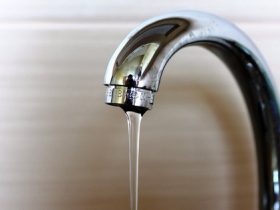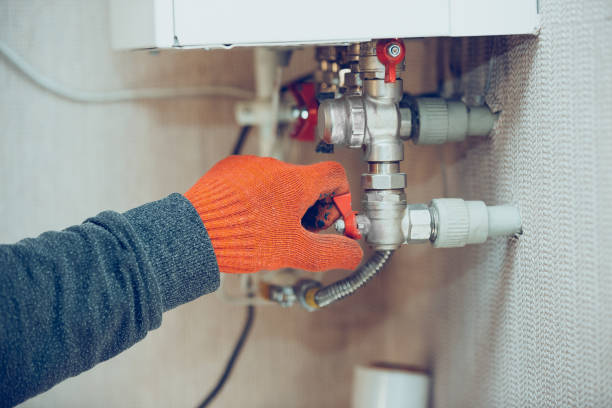Fast Steps for Addressing Low Water Pressure in Your Home
Fast Steps for Addressing Low Water Pressure in Your Home
Blog Article
We've noticed the article relating to Low Water Pressure in the House? below on the internet and concluded it made sense to share it with you over here.

Low tide stress in your home can be an irritating trouble, influencing everything from bathing to cleaning dishes. If you're experiencing weak water flow, there are several feasible causes and options to check out. In this overview, we'll go over common factors for low water pressure and sensible actions to deal with the concern efficiently.
Intro to Low Water Stress
Low tide stress happens when the circulation of water from your faucets, showers, and various other components is weaker than common. This can make daily jobs extra challenging and much less effective. Recognizing the root causes of low tide pressure is essential to locating the right solution.
Typical Causes of Low Water Pressure
Pipe Obstructions
Over time, pipes can come to be obstructed with natural resource, debris, or particles, restricting the circulation of water. This is a common concern in older homes with galvanized steel pipes.
Corrosion
Corrosion within pipes can result in leakages and minimized water pressure. Corrosion accumulation can restrict water flow, especially in aging plumbing systems.
Faulty Stress Regulators
Pressure regulators are responsible for maintaining constant water pressure in your home. If they malfunction, it can result in low water stress or uneven circulation throughout the house.
Local Water Supply Issues
Occasionally, the problem exists outside your home. Metropolitan water issues, such as main line leaks or maintenance job, can briefly decrease water pressure in your location.
Exactly How to Detect Low Tide Stress
Examining Taps and Fixtures
Begin by checking the water pressure at various taps and components throughout your home. If the concern is separated to certain areas, it may indicate localized issues.
Examining Pipes
Check noticeable pipes for indications of leakages, rust, or clogs. Take note of any unusual sounds, such as knocking or rattling pipes, which can show problems within the plumbing system.
Consulting with a Plumber
If you're incapable to determine the cause of low tide stress, take into consideration working with a specialist plumber to conduct a comprehensive evaluation. They can recognize underlying concerns and suggest ideal remedies.
DIY Solutions to Repair Low Water Stress
Cleansing Aerators and Showerheads
Natural resources can accumulate in aerators and showerheads, decreasing water circulation. Get rid of and clean up these components on a regular basis to improve water pressure.
Flushing Hot Water Heater
Debris accumulation in the water heater can limit circulation and minimize effectiveness. Purging the tank regularly assists get rid of sediment and preserve optimum efficiency.
Inspecting Stress Regulatory Authority
Make sure that the stress regulator is operating appropriately. Readjusting or replacing the regulator can assist restore appropriate water stress throughout your home.
Clearing Up Clogs in Water Lines
For minor blockages, try utilizing a plumbing snake or chemical drain cleaner to clear obstructions in pipes. Beware when using chemicals and adhere to security standards.
When to Call a Professional Plumber
If do it yourself efforts fall short to solve the issue or if you believe substantial plumbing problems, it's finest to look for help from a licensed plumber. They have the expertise and tools to resolve intricate issues securely and successfully.
Safety Nets to Preserve Water Pressure
Regular Maintenance
Set up regular upkeep for your plumbing system to prevent issues such as corrosion, leakages, and obstructions. Dealing with small issues early can help stay clear of more considerable repair work in the future.
Installing a Pressure Booster
Consider installing a stress booster pump to boost water stress in areas with constantly low circulation. This can be especially helpful for multi-story homes or properties with high-demand components.
Surveillance Water Usage
Bear in mind water use practices and avoid overtaxing the plumbing system. Simple modifications, such as staggering showers and washing loads, can help maintain adequate water pressure.
Final thought
Managing low water stress can be discouraging, however determining the underlying reasons and carrying out suitable services can bring back ideal circulation throughout your home. Whether it's cleaning up aerators, examining pipes, or talking to a plumber, taking positive actions can make sure a constant supply of water for your daily needs.
FOUR WAYS TO FIX LOW WATER PRESSURE NOW
Turning on a shower or faucet only to find the water comes out in a sad, slow drizzle is never a good feeling. How exactly are you supposed to wash a pan or take a quick shower when it takes 10 minutes just to rinse off a little soap? The good news is that when your water pressure is bad, there's always a cause: typically one that can be easily fixed. Here are some of the most common causes of low pressure and what you can do to fix the issue:
DEBRIS AND MINERAL DEPOSIT BUILDUPS
If you notice low water pressure from just one or two of the fixtures in your house, the problem likely has to do with debris buildup. Water is full of minerals and other debris, all of which can accumulate in your pipes and on your fixtures. This can cause a blockage that affects how much water flows through. To fix this, try filling a small plastic bag with white vinegar, and use a rubber band to hang it around your showerhead or faucet. Let the head of the fixture soak for a few hours, and the vinegar should loosen the deposits.
WATER LEAKS
Leaks are another common cause of low water pressure. If water is flowing out of your plumbing through a hole or crack before it can reach your fixture, the pressure coming out of the faucet or showerhead will be lower. A plumbing professional is your best bet for finding and repairing a leak in your water supply pipes.
Leaks are another common cause of low water pressure. If water is flowing out of your plumbing through a hole or crack before it can reach your fixture, the pressure coming out of the faucet or showerhead will be lower. A plumbing professional is your best bet for finding and repairing a leak in your water supply pipes.
FOUR WAYS TO FIX LOW WATER PRESSURE NOW
Turning on a shower or faucet only to find the water comes out in a sad, slow drizzle is never a good feeling. How exactly are you supposed to wash a pan or take a quick shower when it takes 10 minutes just to rinse off a little soap? The good news is that when your water pressure is bad, there's always a cause: typically one that can be easily fixed. Here are some of the most common causes of low pressure and what you can do to fix the issue:
DEBRIS AND MINERAL DEPOSIT BUILDUPS
If you notice low water pressure from just one or two of the fixtures in your house, the problem likely has to do with debris buildup. Water is full of minerals and other debris, all of which can accumulate in your pipes and on your fixtures. This can cause a blockage that affects how much water flows through. To fix this, try filling a small plastic bag with white vinegar, and use a rubber band to hang it around your showerhead or faucet. Let the head of the fixture soak for a few hours, and the vinegar should loosen the deposits.
WATER LEAKS
Leaks are another common cause of low water pressure. If water is flowing out of your plumbing through a hole or crack before it can reach your fixture, the pressure coming out of the faucet or showerhead will be lower. A plumbing professional is your best bet for finding and repairing a leak in your water supply pipes.
Leaks are another common cause of low water pressure. If water is flowing out of your plumbing through a hole or crack before it can reach your fixture, the pressure coming out of the faucet or showerhead will be lower. A plumbing professional is your best bet for finding and repairing a leak in your water supply pipes.
A VALVE ISSUE
If you have low water pressure throughout your home, check your main shut-off valve to make sure it's completely open. You may also want to see if there's a pressure-reducing valve installed. If there is, have a plumber help you adjust the settings to get the pressure you're looking for.
OTHERS USING WATER
Believe it or not, your low water pressure could be caused by your neighbors. If you notice low pressure at certain times of day, it may be because you and the people living next to you have similar schedules - when everyone is showering at the same time, the pressure will be lower in every home. Low pressure throughout the neighborhood may also be caused by an issue with your municipal water supply. If that's the case, call the supplier to see if they're working on the issue.
https://www.rotorooter.com/blog/water-leaking/low-water-pressure-fixes/

I hope you enjoyed our post about 4 Ways to Troubleshoot Low Water Pressure. Many thanks for taking time to read through our piece. Those who appreciated our post please be sure to pass it around. Kudos for your time. Revisit us soon.
Prices & Booking Report this page